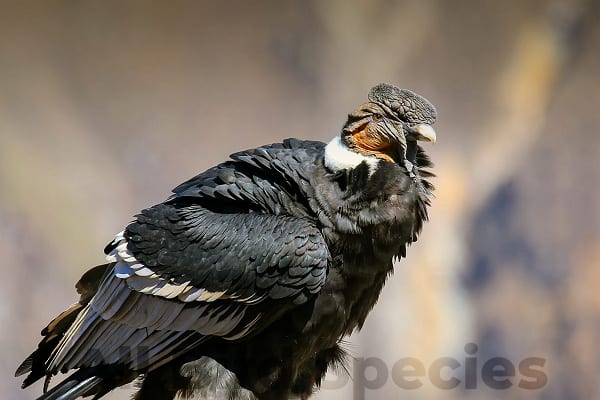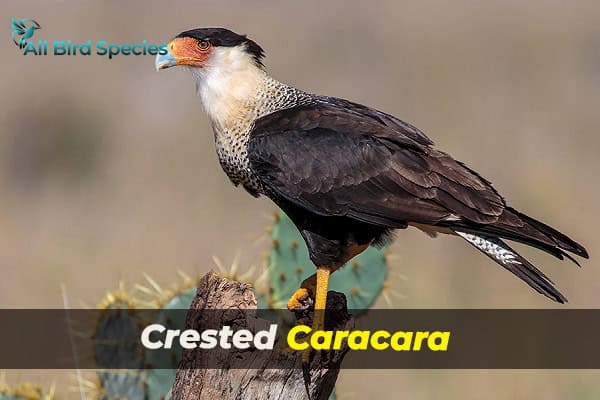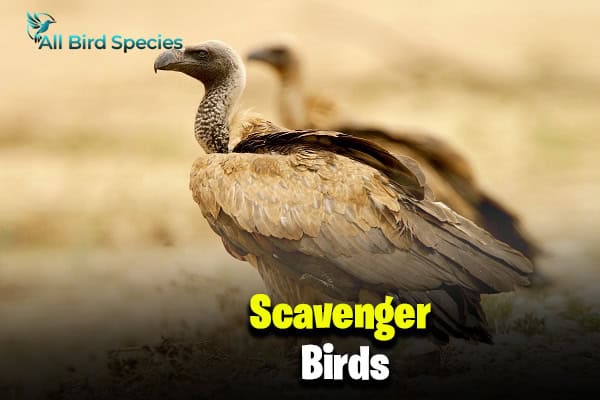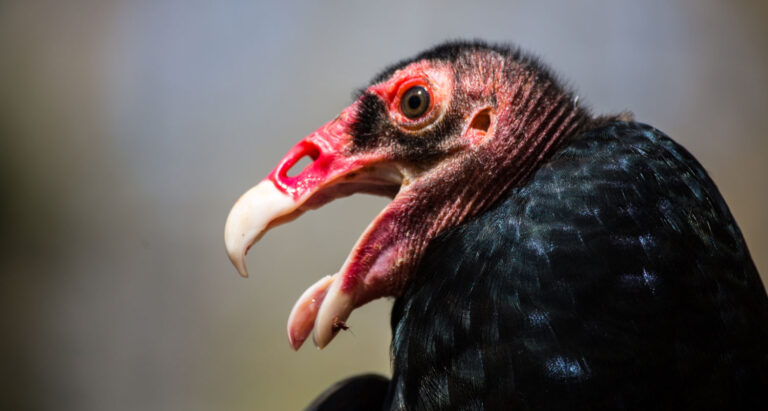13 Types of Scavenger Birds (That Consume Dead Birds)
Did you know that scavenger birds, often called carrion eaters, play a crucial role in maintaining the health of ecosystems? They consume over 70 million tons of dead animals each year. This shows how vital these birds are to nature.
Without them, our environment would face serious health risks and sanitation issues. They help keep our ecosystems balanced.
In this guide, you’ll learn about 13 fascinating types of scavenger birds. You’ll discover everything from vultures to other scavenging birds. You’ll see their physical traits, where they live, and their big role in ecosystems.
Learning about these birds boosts your wildlife knowledge. It also helps you appreciate their crucial role in nature.
Introduction to Scavenger Birds
Scavenger birds are key to nature, often missed because of their unique way of eating. They play a big role in keeping the environment balanced. By eating carrion, they stop diseases from spreading from dead animals.
Many bird species are scavengers, each with their own special ways of surviving. They are essential in ecosystems, acting like nature’s cleanup crew. They help break down organic materials and support nutrient cycling, making the soil richer as they eat carrion. Learning about their role can change how we see these amazing birds.
What are Scavenger Birds?
Scavenger birds are key to keeping ecosystems balanced. They mainly eat dead and decaying flesh. Many bird families include scavengers, like vultures, eagles, crows, and ravens.
These birds have special bird-feeding habits. They use their sharp eyesight to find food from far away. Some also follow big predators to eat what’s left over.
There are many types of scavenging birds. Here’s a table that shows some well-known scavengers and what makes them unique:
| Bird Species | Main Habitat | Unique Traits |
|---|---|---|
| Vultures | Open Grasslands, Mountains | Excellent eyesight, bald head for hygiene |
| Crows | Urban Areas, Forests | Highly intelligent, adaptable feeders |
| Ravens | Mountainous Regions | Complex vocalizations, problem-solving skills |
| Bald Eagles | Near Water Bodies | Powerful talons, capable of stealing prey from other birds |
Characteristics of Scavenger Birds
Scavenger birds have special traits that help them survive. They have strong stomachs that can handle toxic stuff in rotting meat. This lets them eat carrion, a food source many animals can’t touch.
These birds are also great at finding food in unexpected places. In cities, they use human trash to get by. This shows how well they adapt to different living spaces, from wild to urban.
Scavenger birds like to hang out together. You’ll see them flying or eating with friends, which helps them find more food. When they find big dead animals, working together means everyone gets enough to eat. Their size helps them take over the food, keeping other animals away.
| Characteristic | Description |
|---|---|
| Digestive System | Strong enough to process toxic substances in decayed meat |
| Feeding Behavior | Opportunistic, including scavenging human waste |
| Social Structure | Often feed in groups to enhance feeding efficiency |
| Physical Size | Many are large, capable of dominating carcasses |
Vultures: The Iconic Scavenger Birds
Vultures are key scavengers in nature, making them a symbol of this role. They are divided into Old World and New World types. Each group shows unique adaptations and behaviors.
Old World Vs. New World Vultures
Old World vultures have great vision but not a strong sense of smell. They use their eyes to find food in places like Europe, Asia, and Africa. New World vultures, on the other hand, have a strong sense of smell. This helps them find food from far away.
Both types of vultures help keep the environment clean. They stop diseases from spreading by eating dead animals.
Physical Adaptations of Vultures
Vultures have special physical traits that help them in their job. They often have bald heads and necks to keep clean while eating. This keeps their feathers free from blood and germs.
Their strong, hooked beaks are perfect for tearing meat. Their stomachs are also very acidic. This lets them eat dead meat safely, killing off harmful germs.
Types of Vultures
Exploring the different vultures shows us their unique traits and roles in nature. We’ll look at the Lappet-faced Vulture and the Andean Condor. These birds have special features and ways of eating.
Lappet-faced Vulture
The Lappet-faced Vulture is a key bird in Africa, known for its head lappets. It lives in dry areas like deserts and savannahs. It’s well-suited to its environment thanks to its scavenger skills.

This vulture is great at eating every part of a dead animal. You’ll see them together at feeding spots, showing their social side. They also visit garbage sites and eat smaller birds, proving their flexibility.
Andean Condor
The Andean Condor is the biggest flying bird, with a huge wingspan. It uses its strong sense of smell to find food in the Andes. It’s a top predator, eating large animals like horses and deer.

In the wild, it keeps smaller birds away from food, making sure it get enough to eat. Seeing this bird in action shows its important role in nature.
| Vulture Species | Habitat | Feeding Behavior | Size |
|---|---|---|---|
| Lappet-faced Vulture | Semi-arid regions, deserts, savannahs | Feeds on all parts of a carcass, often in groups | Up to 30 lbs |
| Andean Condor | Andes Mountains | Chases off smaller scavengers, feeds primarily on large carcasses | Largest flying bird, wingspan over 10 feet |
Other Notable Scavenger Birds
Many scavenger birds have unique behaviors and adaptations. They stand out in different ecosystems. Their feeding habits show the diversity in their diet and their roles in the environment.
Crested Caracara
The Crested Caracara is known for its eye-catching looks and scavenging behavior. It looks like a falcon but acts like a vulture. You can see it in open areas, like by roadsides, where it eats carrion and small animals.

These birds often follow cars to find roadkill or food thrown out. This shows how adaptable they are in different feeding environments.
Bald Eagle
The Bald Eagle is the national bird of the United States, known for its hunting skills. But, it also scavenges for carrion, especially in winter. About 24% of their diet is carrion.

They have scavenging adaptations that help them get food from other birds at carcasses. They eat dead fish and mammals, showing they can survive in tough conditions.
Marabou Stork
The Marabou Stork is big and looks unique. It is similar to vultures in how it eats. With long legs and necks, and a bald head, it feeds on carrion safely.

It lives in sub-Saharan savannas and grasslands. It eats a lot of dead animals and human trash, showing its varied feeding habits.
Scavenger Birds in Different Ecosystems
Scavenger birds live in many places around the world. They adapt well to different habitats, from cities to wild areas. They even do well in places changed by humans, using waste as food.
These birds are key to keeping ecosystems balanced. They clean up dead animals and waste, stopping diseases from spreading. This helps other animals and plants too.
Scavenger birds also help the environment in many ways. They eat dead animals, which stops diseases from spreading. This keeps the environment healthy. They make sure resources are used again, linking all living things together.
Here’s a brief overview of their ecological contributions:
| Ecological Role | Environmental Benefit |
|---|---|
| Waste Management | Reduces disease spread through the removal of dead animals |
| Nutrient Cycling | Returns nutrients to the soil, promoting plant growth |
| Population Control | Helps regulate populations of both scavengers and prey species |
| Habitat Health | Supports biodiversity and ecosystem stability |
Learning about scavengers shows us how vital they are to nature. Without them, many places would be very different. This shows why we must protect their homes and keep them around.
The Importance of Scavenger Birds in the Ecosystem
Scavenger birds are key to keeping ecosystems balanced. They eat carrion, which helps break down dead animals and recycle nutrients. This stops waste from building up and helps prevent diseases from spreading.
In cities, scavenger birds also clean up human waste, making the environment healthier. They help keep the area clean for both animals and humans. Their work is crucial for recycling nutrients, which supports a diverse range of life.
Scavenger birds show us how ecosystems are connected. They help keep nature in balance, supporting life and biodiversity. Their actions remind us of the importance of preserving nature’s delicate balance.
Recommended Articles:
| Barn Swallow: A Symbol Of Spring |
| inches in the UK |
| Eagles In Florida |
| Birds of the Sahara Desert |
| Birds of Prey Of Africa |
Scavenger Birds and Their Diet
Scavenger birds have interesting diets that mainly include eating carrion. They eat a wide variety of foods, helping them survive in many places, from the wild to cities. These birds prefer different types of carrion, like small rodents or large mammals.
Some scavengers also eat human waste and leftovers from other animals. This way of eating helps them survive and shapes their behavior. Birds like vultures and marabou storks have special ways to find and eat these foods.
Learning about scavenger birds’ diets helps us understand their role in nature. Each bird has its own way of adapting to its environment. For instance, some vultures go for fresh carcasses, while others eat older ones. This ability to change their diets is key to their survival.
| Bird Species | Preferred Food Sources | Habitat | Feeding Techniques |
|---|---|---|---|
| Vultures | Large mammals, carrion | Open savannahs, mountains | Soaring high to spot carcasses |
| Marabou Stork | Fish, carrion | Wetlands, urban areas | Foraging in shallow waters and garbage |
| Crested Caracara | Rodents, carrion, insects | Grasslands, fields | Walking and running to locate food |
These amazing birds show how adaptable and important they are to the ecosystem. They clean up waste and help the food chain by eating in their unique ways.
Wrapping Up…
Scavenger birds are key to our ecosystems, but they often go unnoticed. This article has shown you the amazing variety of scavenger species. It also highlighted their unique traits and vital roles.
These birds, like vultures and marabou storks, are crucial for keeping our environment healthy. They eat carrion, which stops diseases from spreading. This is a big part of their job.
Scavenger birds do more than just clean up. They keep ecosystems balanced in nature and cities alike. By learning about their behaviors and roles, we see how they help in wildlife conservation. This knowledge can make us want to protect these important birds.
Think about how scavenger birds make our world better. Their presence improves the places we live in. By understanding their value, we can take action to save them. This will help these vital animals survive for many years to come.







